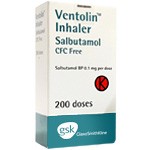Chronic Bronchitis: Understanding the Disease and Managing Life With It


Chronic bronchitis is one of the main forms of chronic obstructive pulmonary disease (COPD), affecting the airways in a persistent, destructive way. The hallmark of chronic bronchitis is a productive cough lasting for months on end. Despite treatments that can ease its burden, the disease is generally not fully reversible. To understand its challenges, risks, and management, one needs to examine how it develops, how it presents, and how patients and clinicians work together to slow its course and preserve quality of life.
When someone first hears “bronchitis,” they often imagine an acute infection — something transient and self limited. But chronic bronchitis is quite different: it is a long term inflammation and irritation of the bronchial tubes, causing persistent cough with mucus, frequent flare ups, progressive airway obstruction, and respiratory symptoms that wax and wane. Over time, chronic bronchitis is often accompanied by emphysema (damage to the tiny air sacs in the lungs), and the combined condition is classified under COPD.
From the outset, it is important to recognize that chronic bronchitis cannot typically be cured in the sense of restoring completely normal lung structure and function. The damage to airways, enlargement of mucus producing glands, and reduced function of cilia (the hairlike structures that normally sweep mucus upward) are not fully reversible. What can be done, however, is to manage symptoms, reduce exacerbations, and slow further decline. With optimal therapy, many patients achieve substantial relief and can live many years with a reasonable quality of life.
What Causes Chronic Bronchitis?
The primary driver behind chronic bronchitis is long-term exposure to inhaled irritants that chronically inflame and damage the bronchial tree. Among these, cigarette smoking is by far the most common culprit. Repeated exposure to tobacco smoke leads to chronic irritation, injury to the airway lining, overgrowth of mucus secreting cells (goblet cell hyperplasia and submucosal gland enlargement), and scarring.
In addition to smoking, other inhaled irritants play a role. These include air pollution, chemical fumes, industrial dusts, occupational exposures, and secondhand smoke. In some geographical settings, chronic exposure to biomass smoke (wood, charcoal used for cooking or heating) is a recognized risk factor. Rarely, a genetic predisposition such as alpha 1 antitrypsin deficiency may contribute.
Over years, inflammation and injury impair normal mucociliary clearance. Mucus accumulates, the airways narrow, and cough becomes the body’s way to attempt to clear the mucus. During exacerbations, additional triggers like infections or pollutants worsen airway inflammation and accelerate lung function decline.
Recognizing Symptoms of Chronic Bronchitis
The presentation of chronic bronchitis is gradual and often overlooked in its early stages. The most prominent symptom is a persistent productive cough that lasts for at least three months per year over two consecutive years. Mucus production is typically worse in the morning.
As the condition progresses, shortness of breath, initially during exertion and later at rest, becomes more pronounced. Wheezing, fatigue, and chest tightness are also common. Frequent respiratory infections and increased mucus during exacerbations are typical. Over time, some may develop signs of low oxygen, such as bluish lips or swelling in the legs.
Because chronic bronchitis overlaps with COPD, lung function testing often reveals airflow limitation and reduced forced expiratory volume (FEV1). Symptoms may vary in intensity but tend to worsen gradually over the years without proper management.
Treatment Approaches for COPD and Bronchitis Management
Managing chronic bronchitis involves symptom control, prevention of exacerbations, and slowing disease progression. Smoking cessation is the most important step, as it significantly reduces inflammation and the rate of lung decline. Avoiding pollutants and allergens is also essential.
Bronchodilators are the cornerstone of medical treatment. These include short-acting and long-acting agents that relax the airway muscles. Inhaled corticosteroids may be added to reduce inflammation in moderate to severe cases. Pulmonary rehabilitation, which includes exercise training, breathing techniques, and education, improves function and quality of life.
Other options include oxygen therapy for advanced disease, mucolytics to thin mucus, and antibiotics for treating bacterial exacerbations. Vaccinations against influenza and pneumococcus are strongly recommended to reduce infection risks. Regular follow-ups and lung function monitoring help adjust treatment over time.
Early Indicators of COPD to Watch For
Chronic bronchitis is often the first sign of developing COPD, especially in smokers over 40. One early indicator is a persistent morning cough that produces mucus. Many dismiss this as a “smoker’s cough,” but it can be a warning sign.
Shortness of breath during physical activity is another early symptom. People may find it harder to climb stairs, carry groceries, or walk long distances. Other subtle clues include frequent chest infections, mild wheezing, or needing to clear the throat often.
Early diagnosis through spirometry (lung function testing) allows for prompt intervention. When COPD is detected early, lifestyle changes and medications can significantly slow its progression and improve long-term outcomes.
The Role of Albuterol Inhalers in the Treatment of Chronic Bronchitis
Albuterol inhalers, also known as short-acting beta2-agonists (SABAs), are commonly prescribed to relieve sudden symptoms such as wheezing, tightness in the chest, or shortness of breath. They act quickly by relaxing the airway muscles and making it easier to breathe.
In chronic bronchitis and COPD, Albuterol is used as a rescue inhaler, providing fast relief during flare-ups or before exercise. It is not intended for long-term control but plays a vital role in managing acute respiratory distress. Delivery methods include metered-dose inhalers or nebulizers.
Although effective, overreliance on Albuterol may indicate poorly controlled disease. When used properly in combination with maintenance therapies, Albuterol helps patients regain breathing comfort quickly and stay active with fewer interruptions from symptoms.
Long-Term Outlook and Quality of Life
Although chronic bronchitis is not curable, many people live long, fulfilling lives with the condition. Life expectancy varies based on the severity of disease, frequency of exacerbations, comorbidities, and adherence to treatment plans.
Lifestyle changes — especially quitting smoking — are critical. Patients who stop smoking, stay active, manage symptoms well, and avoid infections can significantly extend both lifespan and quality of life. Regular medical checkups ensure the treatment remains effective over time.
Some people with mild to moderate chronic bronchitis maintain lung function for years and remain physically active. Others with more advanced disease may experience limitations, but supportive care and proper medication can still make a dramatic difference in daily living.
Final Thoughts
Chronic bronchitis is a serious but manageable condition. It stems from long-term airway irritation, most often due to smoking or pollutant exposure. While it cannot be reversed, its symptoms can be controlled, its progression slowed, and quality of life preserved.
Recognizing early signs like chronic cough and exertional breathlessness allows for timely intervention. With tools like bronchodilators, pulmonary rehab, and Albuterol for rescue, patients can reduce flare-ups and regain a sense of control over their breathing.
Ultimately, the key lies in consistent care, lifestyle adjustments, and close collaboration with healthcare providers. With the right approach, chronic bronchitis doesn’t have to mean a poor prognosis—it can be the beginning of a new, healthier routine.
Drug Description Sources: U.S. National Library of Medicine, Drugs.com, WebMD, Mayo Clinic, RxList.
Reviewed and Referenced By:
Dr. Alan Carter, PharmD Clinical pharmacist with expertise in respiratory pharmacotherapy and chronic disease management. Regularly cited on Drugs.com for reviewing treatments involving bronchodilators and inhaled corticosteroids in COPD and chronic bronchitis care.
Dr. Carol DerSarkissian, MD Board-certified in internal medicine and a medical reviewer for WebMD. Her work focuses on pulmonary conditions, including bronchitis, asthma, and COPD. She provides peer-reviewed insights on early detection and long-term management strategies.
Dr. Dianne B. McKay, MD Professor of Clinical Pharmacology and contributor to RxList and NIH publications. She specializes in medication safety and has published research on corticosteroid use, inhaled therapies, and anti-inflammatory agents in chronic lung diseases.
Dr. William C. Shiel Jr., MD, FACP, FACR Chief Editor at MedicineNet and affiliated with WebMD. Author of numerous articles on bronchial diseases, including the pathophysiology, progression, and pharmacologic management of chronic bronchitis and COPD.
Dr. Steven Gans, MD Harvard-trained internal medicine and family health physician, known for his medical reviews on Verywell Health. He provides expert evaluation of symptom-based treatment, inhaler use, and patient adherence in chronic respiratory disorders.
(Updated at Sep 26 / 2025)

